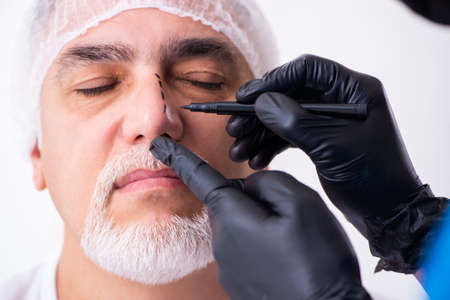Understanding Tattoo Removal Procedures in the UK
If you’re considering having a tattoo removed in the UK, it’s important to understand the different procedures available and how they are typically performed within British clinics. The most common method is laser tattoo removal, which has become increasingly popular due to its effectiveness and relatively minimal recovery time. In this process, highly concentrated light beams break up the ink particles under your skin, allowing your body to gradually clear them away. It’s usually done over several sessions, depending on factors like tattoo size, ink colour, and skin type.
While laser treatment is the gold standard, some clinics may offer alternative methods such as surgical excision or dermabrasion. Surgical excision involves physically cutting out the tattooed area and stitching the skin back together, making it suitable for smaller tattoos. Dermabrasion uses a rotating device to sand down layers of skin, though it’s less common these days due to longer healing times and higher risk of scarring.
In the UK, reputable clinics will always start with a thorough consultation, discussing your expectations, assessing your tattoo, and explaining potential risks and outcomes. Clinics must operate under strict hygiene standards set by local councils and practitioners should be fully trained and licensed. You’ll often find that many practitioners are registered with professional bodies such as the British Association of Dermatologists or have certification in laser safety.
It’s worth noting that not all tattoo inks respond equally to removal; for example, black ink generally fades more easily than coloured pigments like green or blue. Each session can last from a few minutes to an hour, depending on your tattoo’s complexity. Clinics also emphasise aftercare—following instructions properly is crucial for good results and minimising side effects.
Ultimately, choosing a qualified UK clinic ensures you receive safe care in line with local regulations. Whether you want to fade an old design or remove it completely, understanding these procedures gives you confidence to take the next step in your tattoo journey.
2. Legal Requirements for Tattoo Removal Providers
If you’re considering tattoo removal in the UK, it’s vital to understand the legal framework that governs clinics and practitioners. The regulations are designed to protect clients’ health and safety, and ensure that treatments are carried out by qualified professionals. Here’s what you need to know about the main legal requirements:
Licensing and Registration
All tattoo removal providers must be licensed with their local council under UK law. This applies whether they use lasers or other removal methods. Local authorities set specific standards for cleanliness, equipment, and hygiene, and regularly inspect premises to maintain compliance.
| Requirement | Description |
|---|---|
| Premises Licence | The clinic must have a licence from the local council to perform tattoo removal procedures. |
| Practitioner Registration | Individual practitioners may also need to register with the local authority depending on the council’s rules. |
Insurance Obligations
Tattoo removal providers are legally required to hold comprehensive insurance policies. This typically includes:
- Public Liability Insurance: Covers injury or damage claims from clients or visitors.
- Professional Indemnity Insurance: Protects against claims of malpractice or negligence during treatment.
Practitioner Qualifications and Training
The UK places a strong emphasis on practitioner competence. While there isn’t a national qualification specifically for laser tattoo removal, reputable clinics require staff to complete accredited training courses in laser safety and skin care. Additionally, many councils require evidence of ongoing professional development.
| Qualification Area | Details Required |
|---|---|
| Laser Safety Training | Completion of a recognised course (e.g., Core of Knowledge certificate) |
| First Aid Certification | Up-to-date first aid training is often mandatory |
| Continued Professional Development (CPD) | Proof of regular training updates and skills refreshers |
CQC Registration (England Only)
If a clinic offers additional medical procedures alongside tattoo removal, such as prescription medicines or surgical interventions, registration with the Care Quality Commission (CQC) is required in England.
The Bottom Line for Clients and Clinics
If you’re seeking tattoo removal in the UK, always check that your chosen provider meets these legal requirements. For clinics, staying compliant isn’t just about ticking boxes—it’s about safeguarding your reputation and your clients’ wellbeing.
![]()
3. Age Restrictions and Consent Laws
When it comes to tattoo removal in the UK, strict age restrictions and consent laws are in place to protect younger clients. Legally, you must be at least 18 years old to receive a tattoo, and similar rules apply when it comes to having tattoos removed. For anyone under 18, even if the tattoo was acquired earlier or abroad, reputable clinics will generally refuse treatment unless there are exceptional medical reasons. If you’re underage and considering tattoo removal, written parental or guardian consent is mandatory—and many clinics will require that parent or guardian to be present during the consultation and treatment sessions.
The process for obtaining consent is quite thorough. Clinics are not only legally obliged but also ethically bound to verify ages, usually by checking photo identification like a passport or driving licence. This extra layer of protection ensures that all parties understand the implications of the procedure, especially since laser tattoo removal can carry risks such as scarring or changes in skin pigmentation. If you’re a parent seeking removal for your child, prepare for a detailed discussion about why the treatment is needed and what outcomes to expect. It’s all part of a broader UK effort to promote responsible practices within the aesthetics industry while safeguarding young people from making impulsive decisions they might later regret.
4. Health and Safety Standards
When it comes to tattoo removal in the UK, health and safety standards are absolutely paramount. Providers must strictly follow British health and hygiene guidelines, which are put in place to protect both clients and practitioners from potential risks such as infections or allergic reactions. The Care Quality Commission (CQC) often inspects clinics that offer more invasive procedures, but even non-CQC registered providers are expected to maintain high levels of cleanliness and safety.
Essential Hygiene Practices
The foundation of safe tattoo removal lies in effective infection control. Practitioners are required to wear disposable gloves, use single-use needles or handpieces when possible, and ensure all surfaces are disinfected before and after each treatment. Proper waste disposal, especially of sharps and contaminated materials, is not just good practice—it’s a legal requirement under UK regulations.
Equipment Sterilisation
All equipment that comes into contact with skin must be sterilised between clients. Autoclaves are widely used for this purpose, ensuring high-pressure steam eradicates any lingering bacteria or viruses. Below is a quick overview of common sterilisation practices:
| Sterilisation Method | Application | Frequency |
|---|---|---|
| Autoclaving | Reusable tools & attachments | After each client |
| Chemical Disinfection | Surfaces & non-autoclavable items | Between treatments |
| Single-use disposables | Needles & gloves | Disposed after each use |
Regulatory Inspections and Training
Councils across the UK have the authority to inspect premises to ensure compliance with local bylaws on hygiene standards. Many require tattoo removal technicians to register their business and prove theyve completed infection prevention training. Continuous professional development in health and safety is strongly encouraged, keeping practitioners up-to-date with best practices.
Your Responsibility as a Client
If you’re considering tattoo removal, don’t hesitate to ask your provider about their sterilisation process and infection control measures. A reputable clinic will be transparent about their protocols and happy to show you their certificates or inspection results. It’s always better to be safe than sorry when it comes to your skin’s health.
5. Aftercare Advice and Consumer Rights
When it comes to tattoo removal in the UK, aftercare is not just a suggestion – it’s an essential part of the process and your legal protection as a client. Reputable practitioners are required to provide you with clear, written aftercare instructions tailored to the method of removal used, whether laser or alternative techniques. This guidance should cover how to care for your skin post-procedure, what signs of infection to watch out for, and when to seek medical attention. It’s perfectly normal for your skin to feel tender or appear slightly red after treatment, but you should never hesitate to ask follow-up questions if you’re unsure about any part of the healing process.
Your consumer rights in the UK are strongly protected under legislation such as the Consumer Rights Act 2015. This means that if a service falls below reasonable standards—if the procedure causes unexpected damage, or if promised results are not delivered—you have the right to request remedial action or a refund. If things do go wrong during or after removal, most professional clinics will have a formal complaints procedure in place; don’t be shy about requesting details. You can also contact regulatory bodies like the Care Quality Commission (CQC) in England or Health Improvement Scotland (HIS), depending on where you receive treatment.
Finally, always remember that support doesn’t end when you leave the clinic. Many practitioners offer follow-up appointments or check-ins to monitor your progress and answer lingering concerns. If you ever feel unsupported or unsure about the care you’ve received, reach out for advice—be it from your practitioner, local council, or consumer helplines like Citizens Advice. In my own experience, feeling informed and empowered made all the difference during my tattoo removal journey—so don’t underestimate the value of knowing your rights and taking good care of yourself every step of the way.
6. Potential Risks and How to Make a Safe Choice
While tattoo removal is increasingly popular across the UK, it’s important to be aware of the potential risks involved. Laser tattoo removal, which is the most common method, can cause side effects such as temporary redness, swelling, blistering, and in rare cases, scarring or changes in skin pigmentation. Some people may also experience mild pain or discomfort during and after treatment. The chances of complications can increase if the procedure is not performed correctly or by an unqualified practitioner.
Known Risks and Side Effects
The risks are usually minimal when you choose a reputable provider, but it’s good to go in with your eyes open. Apart from discomfort and visible irritation right after treatment, some individuals might notice the treated area becomes lighter (hypopigmentation) or darker (hyperpigmentation) than the surrounding skin. Infections are rare but possible if aftercare instructions aren’t followed diligently. Allergic reactions to the breakdown products of certain ink colours have also been reported, though these are uncommon in professional clinics.
Choosing a Trustworthy UK Provider
To ensure your safety, always check that your chosen clinic is registered with the relevant local authority, as required by UK regulations. Look for practitioners who hold recognised qualifications in laser treatments and have experience specifically in tattoo removal. Don’t hesitate to ask about their training and request to see before-and-after photos from previous clients. Reading reviews from other patients can also give valuable insight into their professionalism and results.
Tips for a Safe Experience
Avoid “bargain” deals that seem too good to be true—these often come at the expense of safety standards. Always attend a consultation first; this gives you a chance to discuss your medical history, understand the process, and ask about aftercare. A reputable UK provider will be transparent about risks, expected outcomes, and costs, and they’ll never pressure you into making a decision on the spot. Trust your instincts: if something doesn’t feel right, look elsewhere.
Ultimately, choosing a qualified and regulated practitioner is key to minimising risks and ensuring your tattoo removal journey is as safe—and as positive—as possible.

